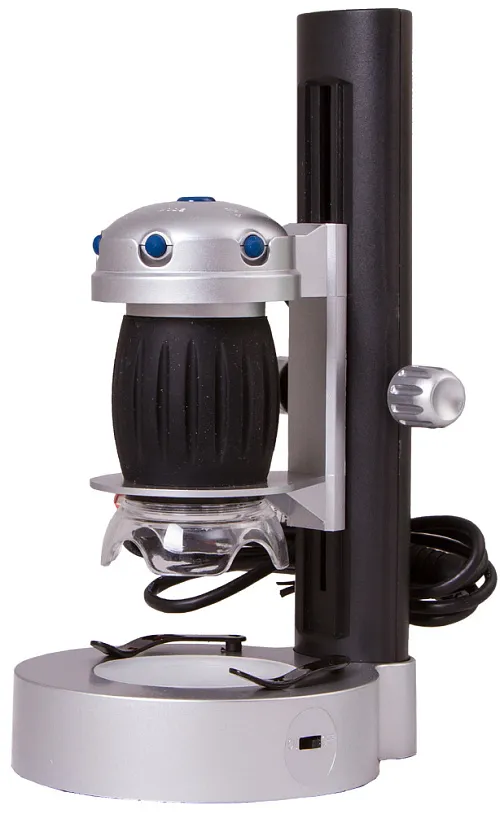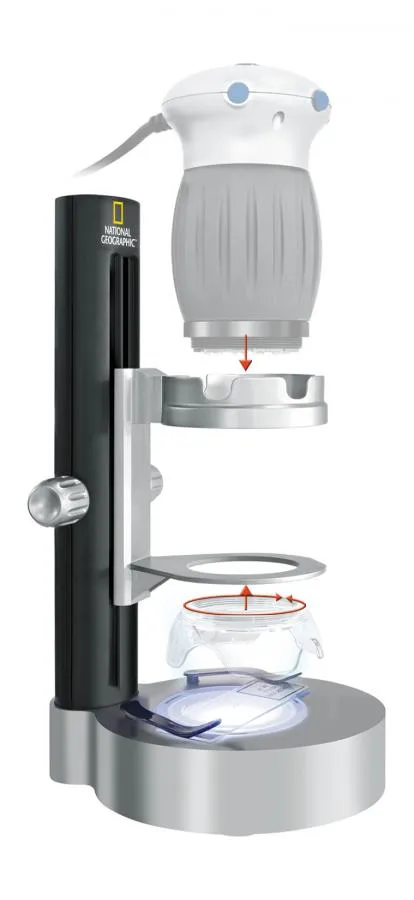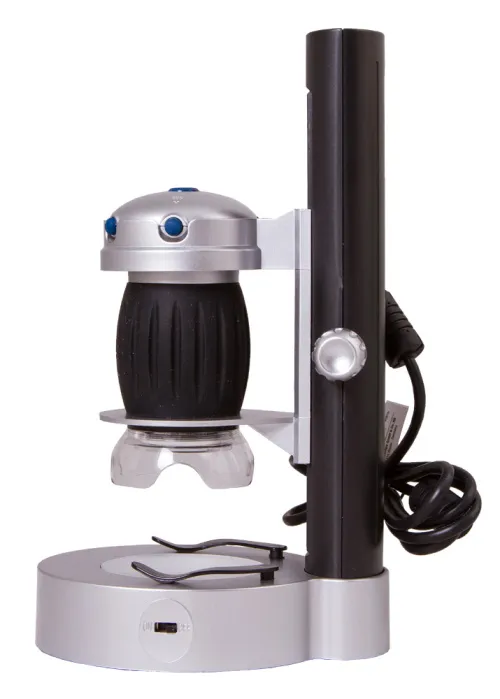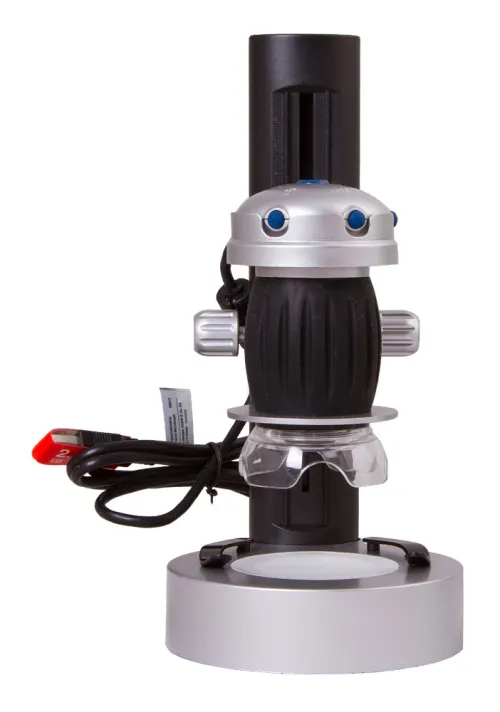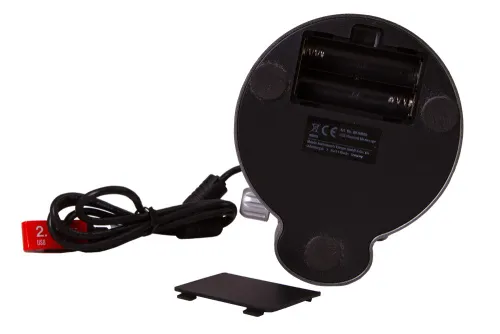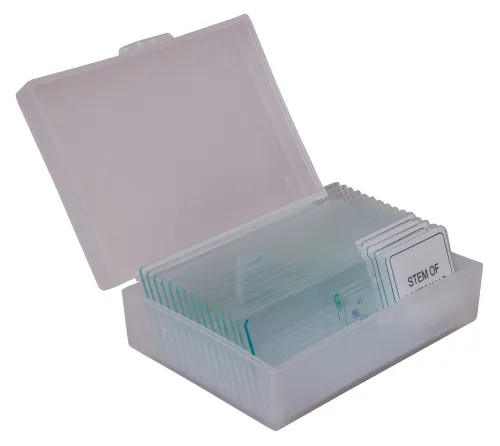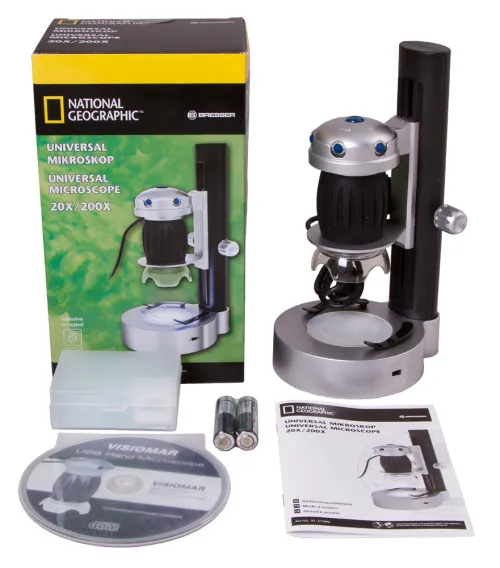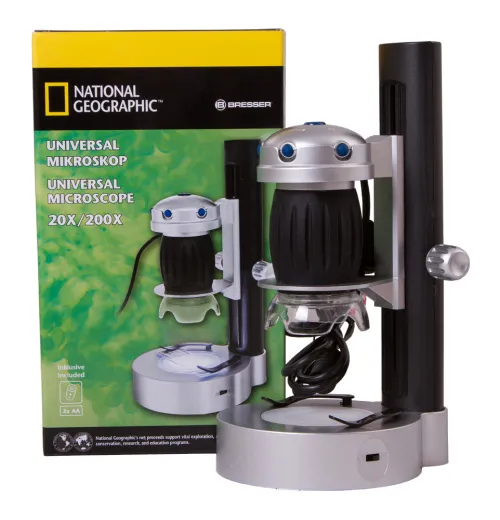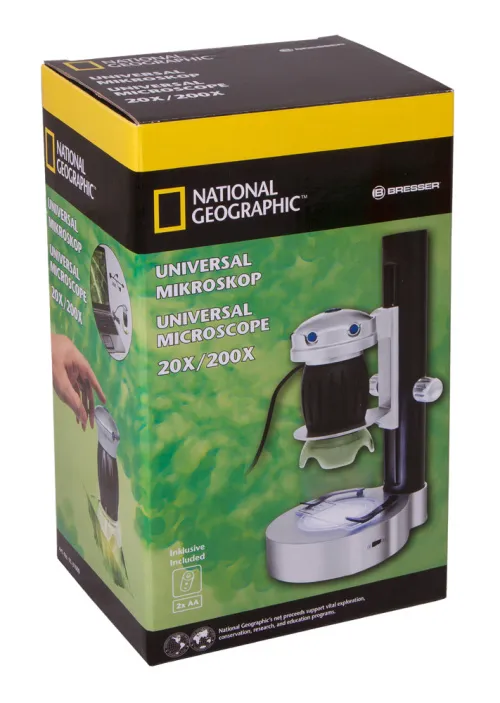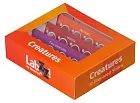Bresser National Geographic Digital USB Microscope with stand
Microscope for kids. Magnification: 20x and 200x. Prepared slides included
| Product ID | 69369 |
| Brand | Bresser GmbH, Germany |
| Warranty | 2 years |
| EAN | 0611901513263 |
| Package size (LxWxH) | 23x13x11 cm |
| Shipping Weight | 0.67 kg |
The Bresser National Geographic USB digital microscope is an ideal choice for children interested in science. To start observations, install the included software and connect the microscope to a computer or laptop via a USB cable. Your home laboratory is ready! Now you can conduct observations and record all the important stages of research. Photos can be saved to the computer by pressing just one button. The microscope is charged from the computer, but the lower illumination requires 2 AA batteries. The microscope has two fixed magnifications: 20x and 200x and different modes of illumination. All this allows you to observe an ink on a paper, the texture of leaves, the structure of the bark of trees, or the pattern of butterfly wings and the wool of a rug!
Features:
- Digital microscope with two fixed magnifications: 20x and 200x
- LED illumination with adjustable brightness
- Power supply and data transfer via USB cable
- Photo and video recording
- Prepared slides are included in the kit
The kit includes:
- Bresser National Geographic Digital USB Microscope
- Stand
- Prepared slides
- Software CDs
- 2 AA batteries
- User manual
| Product ID | 69369 |
| Brand | Bresser GmbH, Germany |
| Warranty | 2 years |
| EAN | 0611901513263 |
| Package size (LxWxH) | 23x13x11 cm |
| Shipping Weight | 0.67 kg |
| Type | digital |
| Microscope head type | digital screen/PC monitor |
| Optics material | optical glass |
| Magnification, x | 20 — 200 |
| Focus | coarse |
| Body | plastic |
| Illumination | LED |
| Brightness adjustment | ✓ |
| Power supply | USB cable |
| Power supply: batteries/built-in battery | 2 AA batteries for lower illumination |
| User level | beginners, elementary |
| Image | photo recording capability (button) |
| Application | elementary, school/educational |
| Illumination location | dual |
| Research method | bright field |
| Experiment kit included | ✓ |
| Megapixels | 1.3 |
| System requirements | OS Windows XP SP2/Vista/7; at least 1GB RAM, USB 2.0, CD/DVD-ROM |
and downloads
We have gathered answers to the most frequently asked questions to help you sort things out
Find out why studying eyes under a microscope is entertaining; how insects’ and arachnids’ eyes differ and what the best way is to observe such an interesting specimen
Read this review to learn how to observe human hair, what different hair looks like under a microscope and what magnification is required for observations
Learn what a numerical aperture is and how to choose a suitable objective lens for your microscope here
Learn what a spider looks like under microscope, when the best time is to take photos of it, how to study it properly at magnification and more interesting facts about observing insects and arachnids
This review for beginner explorers of the micro world introduces you to the optical, illuminating and mechanical parts of a microscope and their functions
Short article about Paramecium caudatum - a microorganism that is interesting to observe through any microscope

